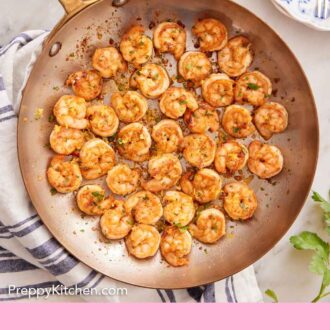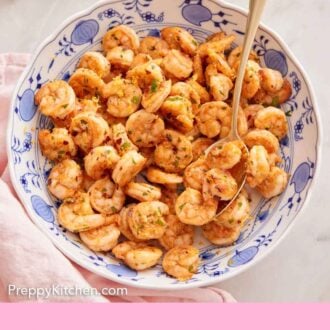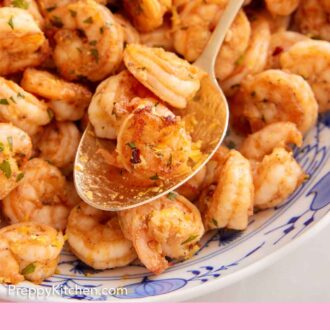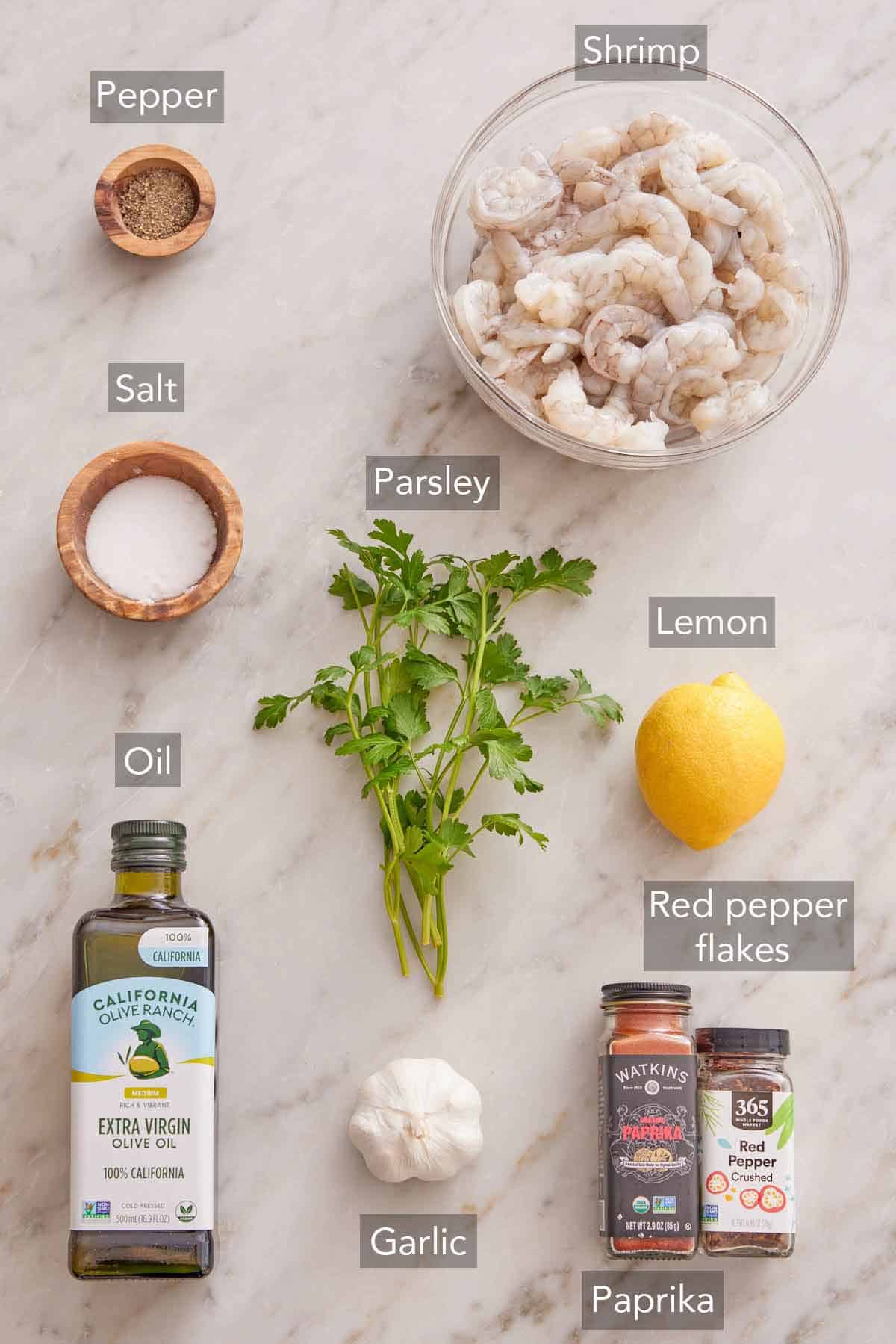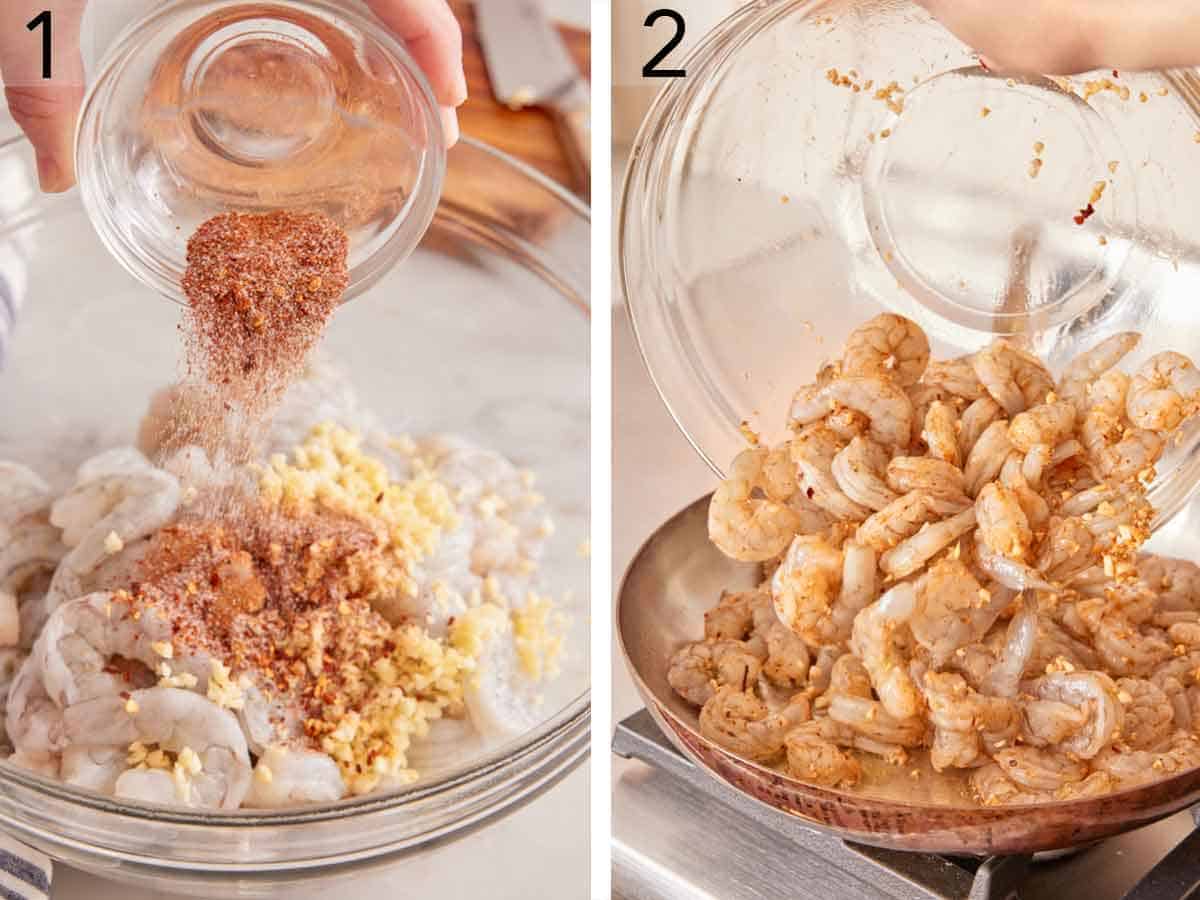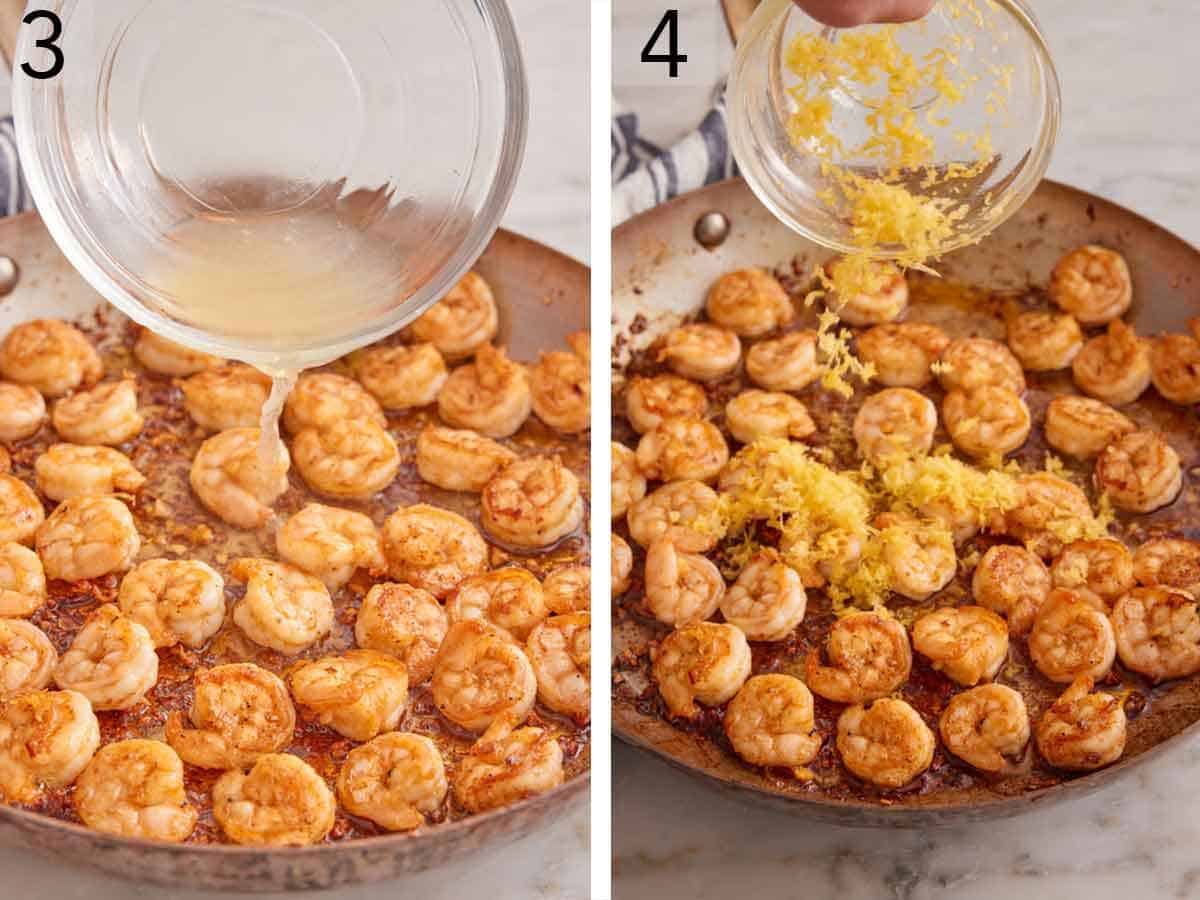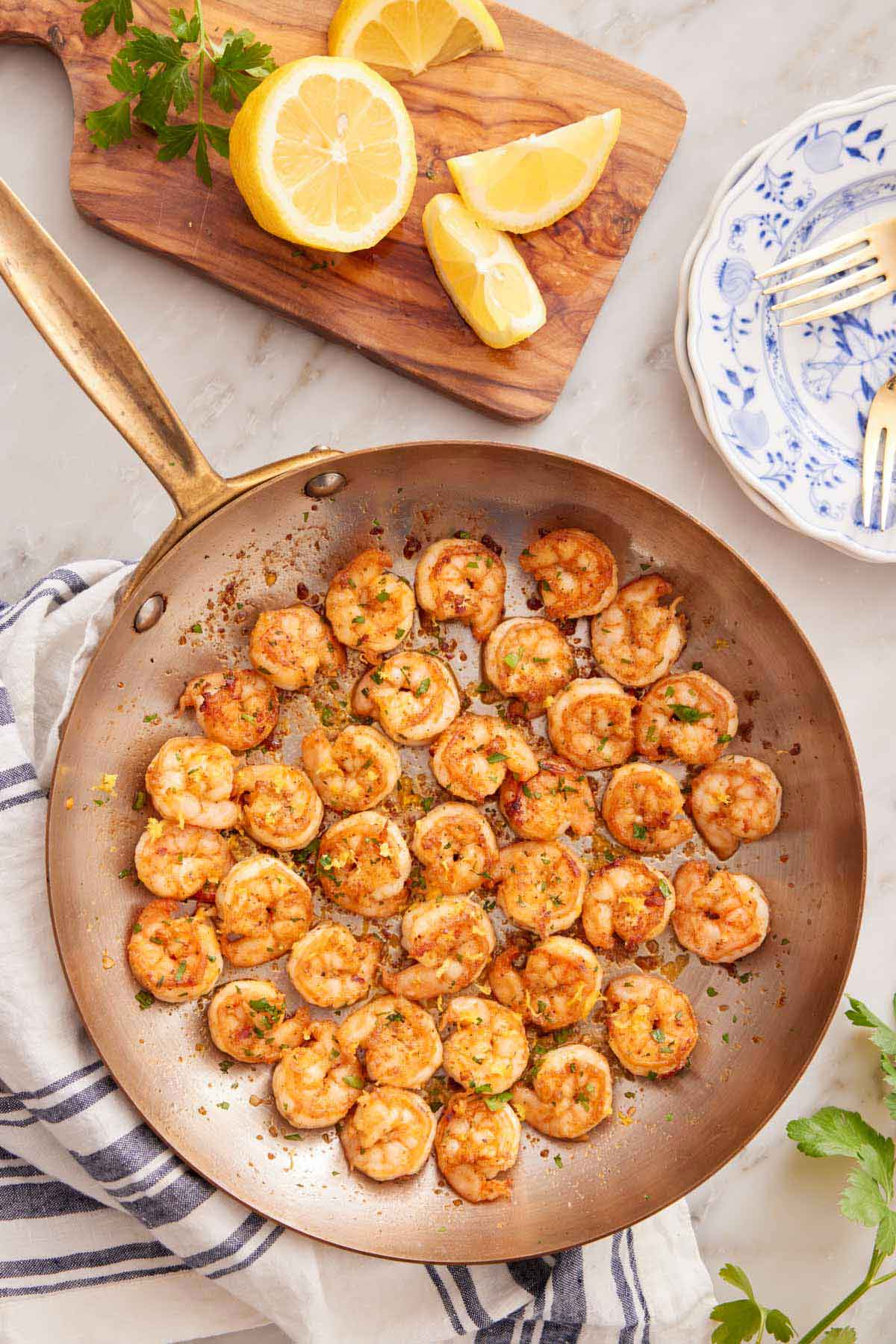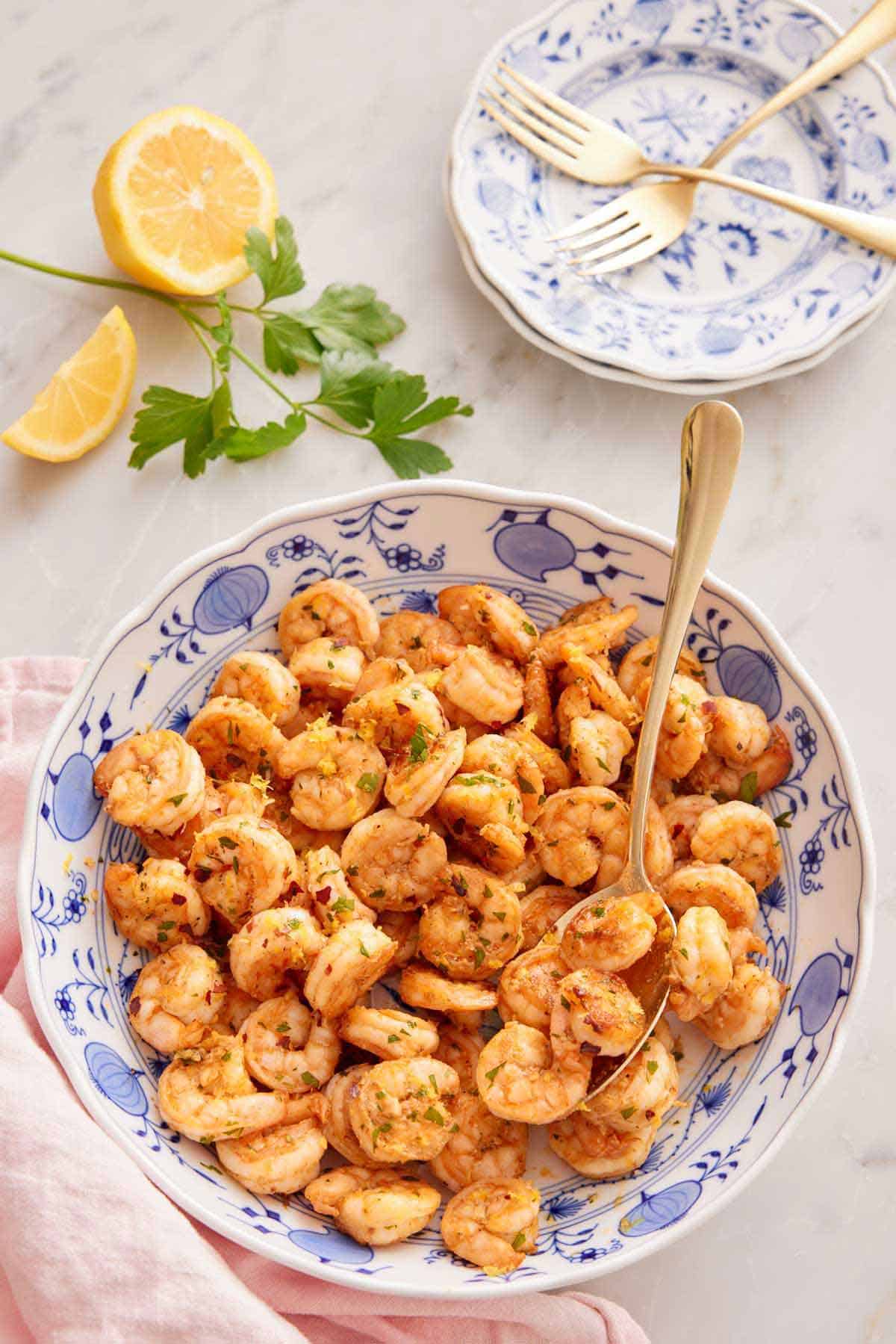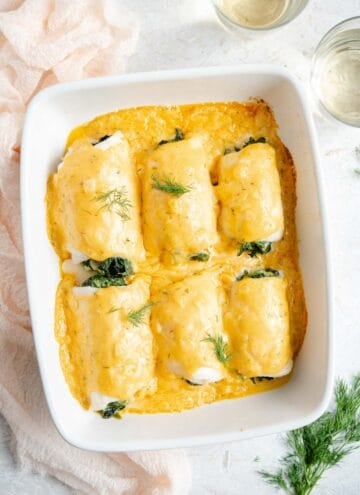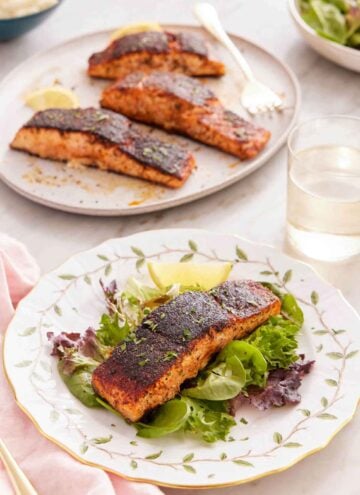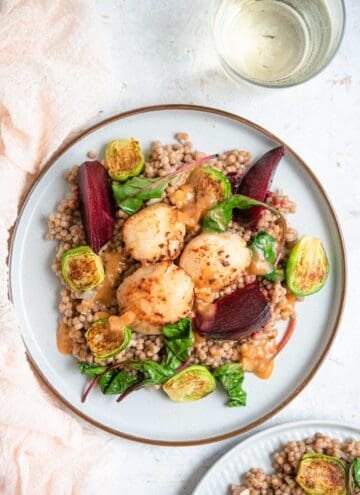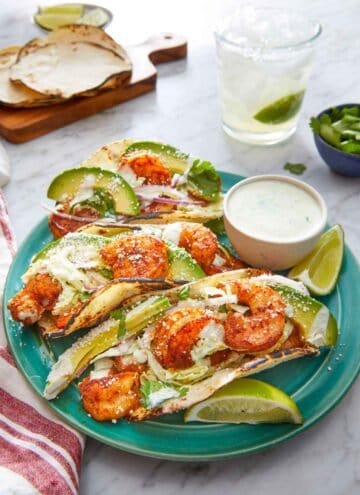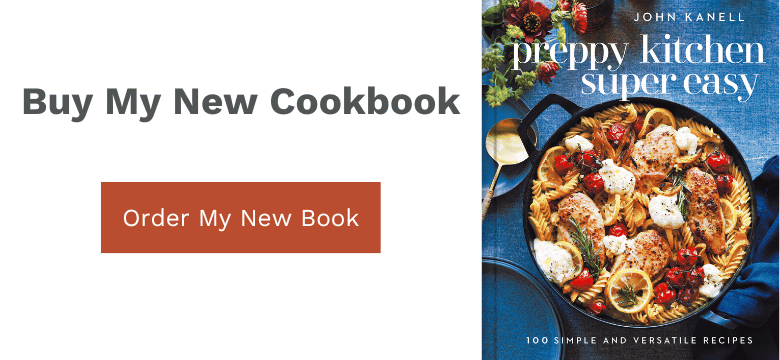It may seem difficult to cook the perfect sautéed shrimp, but this post will guide you to getting perfectly plump and tender shrimp every single time. You’ll be whipping up shrimp for dinner every night like a pro! I you want another shrimp recipe, then try my garlic shrimp recipe, bacon wrapped shrimp recipe, shrimp ceviche recipe, or shrimp scampi recipe. There are so many easy ways to incorporate shrimp into your meals!
What You Need to Make This Recipe
Seasoning — you can use any combination of seasoning you’d like! I use garlic, salt, paprika, pepper, and red pepper flakes to create a delicious savory flavor that goes with the shrimp’s mild sweetness. Shrimp — shrimp comes in a variety of sizes. The bags of shrimp will have a number on them to let you know the size. Generally, the larger the number on the bag, the smaller the shrimp in the bag! Large shrimp (31/35 per pound) is ideal as small shrimp will cook too quickly, and they’re easy to overcook. Make sure to clean and devein shrimp before cooking or buy pre-peeled and deveined to reduce the preparation time. You can use shrimp with tails on or off. If you are buying fresh shrimp, make sure they do not have any odor and are sold over a large bed of ice. Oil — you can use your favorite neutral oil to sauté the shrimp in. I’m using olive oil. Lemon — lemon juice and zest adds a light, bright flavor to the shrimp. Use freshly squeezed lemon juice instead of bottled lemon juice, as the flavor is better.
How to Make Sautéed Shrimp
- Combine the shrimp, garlic, salt, paprika, pepper, and red pepper flakes in a medium mixing bowl. Toss together until the shrimp is well-coated.
- Heat the oil in a large skillet over medium-high heat. Add the shrimp and cook, stirring occasionally, until the shrimp are pink and opaque.
- Remove from the heat and stir in the lemon juice.
- Top the sautéed shrimp with the lemon zest. Garnish with parsley.
Pro Tips for Making This Recipe
Shrimp cooks very quickly, so keep a close eye on them in the skillet. Once the shrimp turns opaque, it’s time to remove the shrimp from the heat. Always pat shrimp dry with a paper towel, especially if you are thawing it from frozen. Patting the shrimp will remove excess moisture to give your shrimp the best possible texture and help the seasoning stick better. If there is moisture, the shrimp will steam instead of sear in the skillet. The larger the skillet, the better! The shrimp should be in a single layer in the skillet. If you use a small skillet, the shrimp will overlap and steam. When zesting a lemon, stop zesting once you reach the white layer, as the white is bitter. Remove the sautéed shrimp from the pan once you’ve added the lemon and parsley so it doesn’t continue cooking from the pan’s residual heat.
If you’ve tried this Sautéed Shrimp recipe, then don’t forget to rate the recipe and let me know how you got on in the comments below, I love hearing from you!
